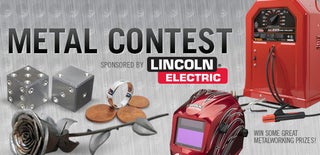Introduction: Reverse Flow Smoker
I love BBQ and projects, so when my air compressor decided retirement was in order and my wife asked, no she stated that I was going to get rid of this tank, I went to my happy place, the garage and looked at my old friend and not wanting to say good bye the light bulb turned on, why not make a new smoker. Having a wife who loves BBQ I got the thumbs up on the project. In watching different BBQ shows I had heard of reverse flow style smokers, they where suppose to control a more even heat and allow you to have lower temperatures in your smoker - can you say smoked cheese. I have many different types of smokers so this one just rounds out the group.
Okay, I had the food tank now for the heat camber, it had to be proportion in size to the 24 gallon tank - why not use a 8 gallon fork lift tank. I stopped by are local LP Gas dealer and he was more then happy to give me an old tank.
Step 1: Tank Prep
I remove the legs and base on the air tank, then layout the door opening and cut. I measured the small tank to determine the working height for the smoke tank, then fabricated the base with wheels so that I can move it around.
Next came the LP gas tank, this you have to be very careful when cutting. I filled the tank with chlorinated water many different times so as to remove the gases, then when I went to make the first cut I filled the tank with water so I would not have any sparks inside the tank. After the first cuts you should not have any problems so you can drain the water.
I forgot to take some pictures of how I got the curves of the two tanks to match. I purchased cardboard tubing for concrete footings the same size as the LP tank. I cut the tube to match the smoke tank and when I got it to fit I cut the tube in half and taped it on the LP tank to trace the pattern. After you cut out the pattern fit the two tanks together, them measure for the opening for the smoke to travel.
Step 2: Fitting the Reverse Flow System
Before you complete the welding of the two tanks, fit the steel plate for the reverse flow of the smoker. I did a solid weld at the area of the two tanks meeting and I spot welded the rest of the plate going to the othe end of the tank. My feeling was that is was a lot of welding for my small 120V welder and I figured that if smoke was entering in that area it would not hurt.
Step 3: Welding
Complete a full weld between the tanks, then fabricate the main door for the smoker and the wood door on the fire chamber. I used the cut outs from each tank and I just welded a 1 inch steel band on the outside . Once again this is smoker so if it's not air tight that is okay.
Step 4: Installing the Smoke Stack
I used a 3" steel tube for the smoke stack with a simple steel plate with a bolt welded to the side, to control the draft. Welded a 2" steel plate as stop for the lid, notice the lid with the steel plate welded to the edge this helps in sealing the smoke tank.
Step 5: Fire Box
I welded in angle iron into the base area of the fire box to hold the basket and let ash drop down during the smoke.
Step 6: The Finished Product...
The finished product the smoker and the first smoke - brisket. Notice down on the inside of the fire box I have install a computer fan system. This system allows me to control the low temperatures that are needed in smoking cheese. I have modified the fire box to accept a larger fan system for use in the colder months when it's a little harder to maintain temperatures.

Participated in the
Metal Contest









